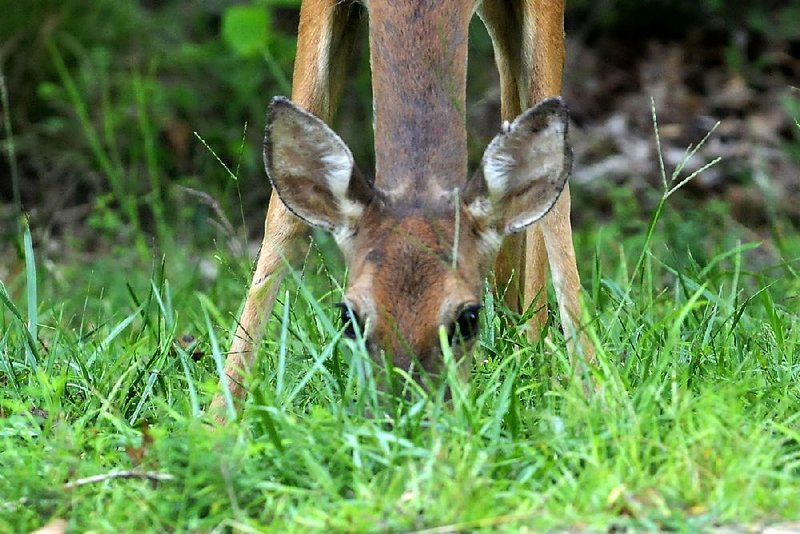In February, most Arkansas sportsmen are preparing for turkey hunting or crappie fishing, even though deer season continues until the cusp of spring.
With our usually mild winters and burgeoning deer populations, the states that comprise Dixie offer the longest hunting seasons and most generous bag limits in the nation. Arkansas, Alabama, Mississippi, Florida and Texas allow some form of deer hunting well into February. These late seasons provide hunting opportunities for the general public and greater flexibility to manage deer herds.
February hunting occurs in specific zones in Alabama, Florida, Mississippi and Texas. Virginia allows antlerless hunting in four counties for most of April, and for most of March in certain cities. Those localized seasons are designed to reduce nuisance deer in major populations centers and have no statewide herd ramifications.
In Arkansas, the statewide archery season ends on the last day of February. It is Dixie’s longest statewide deer season.
Deer hunters and deer managers are sensitive to the possibility of overhunting, but deer managers in those five states agree that hunting in February has no undesirable impact on deer herds. If anything, it is probably an underused opportunity.
At least since 1995 - the last year for which records are available - archery season in Arkansas ended the last day of February. In 2003-05, the Arkansas Game and Fish Commission closed the season Feb. 15 because of concerns that hunters were killing adult bucks that had shed their antlers. The perception that hunters were mistakenly killing mature bucks that had shed their antlers was false. The commission restored the Feb. 28 closure in 2006 in response to hunters’ requests.
Cory Gray has been the deer project leader for the AGFC since 2005. He said hunters probably do kill a few adult bucks that have shed their antlers, but the number is inconsequential. In 2013, for example, hunters in Arkansas killed 1,213 deer in February. Of those, 961 were does and 141 were “button” bucks. The remaining 111 were antlered bucks. There are 75 counties in Arkansas, so that translates to 1.5 mature bucks per county.
Hunters killed 996 deer in February 2011. The percentages were identical. Even with the remote possibility that all 141 “buttons” were shed adults, Gray said the biological impact is negligible.
“There’s no impact from a biological standpoint,” Gray said. “In 2013 we killed 1,213 deer in February. That’s 0.57 percent of the total harvest, not even one percent. The same was true in 2012.
“It’s just not a big deal, and it has no impact on the total harvest.”
If that’s the case, why hunt in February at all?
“It provides hunting opportunity,” Gray said. “They don’t kill a lot in February, but apparently hunters like to sit in a tree in the month of February. They just want to have the ability to get out and enjoy the woods. If that results in them being happy, and if there’s no negative impact on the deer herd, then there’s no reason not to do it.”
Although it is biologically insignificant, mistakenly shooting a buck that has dropped its antlers is disappointing. Hunters will probably endure some ribbing, and maybe even criticism from peers. They might also deprive themselves of a chance later at a mature buck that previously wore a set of trophy antlers.
Hunters can avoid this mistake by identifying their target before they shoot. It is a cardinal rule of hunting.
If a buck has recently shed its antlers, its pedicles will still be raw and bloody. If hunters are bowhunting, any deer a hunter intends to shoot should be close enough to closely observe the head.
“If it’s an older age class buck that’s shed, you ought to be able to see red spots,” Gray said. “When yearlings lose their antlers, sometimes it’s a little harder to see the pedicles.”
Bucks sometimes shed early if they are stressed by the cumulative effects of rutting activity and poor nutrition from limited food availability. The pedicles might have healed in such a case, making it harder to identify a shed buck, especially in poor light and thick cover.
If a hunter cannot distinguish the animal as one he wishes to shoot, he should restrain himself and wait for a better opportunity.
“Bowhunters tend to get closest to the game,” Gray said. “So they ought to be able to do the most accurate IDs of any hunter group.”
Sports, Pages 26 on 02/02/2014

